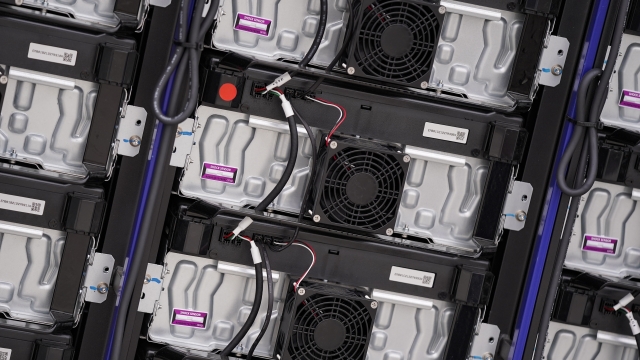How did the Lone Star state, known for its fossil fuel production, become America’s leader in renewable energy?
Supporters say the future of that is in doubt, as Texas Republicans push bills to exclude wind and solar from key state tax credits.
"If there is a proposal for a new economic development program, if it has wind and solar I'm not just going to vote no, I’m going to do everything I can to kill it," said Sen. Bryan Hughes.
"We've got a lot of land that is, in marketing speak, real estate speak, underutilized," said Michael Osborne, an energy developer and pioneer of Texas wind power.
Green energy has reaped the benefits of plentiful resources in Texas. There’s plenty of sun in the Lone Star state — 17 gigawatts of solar capacity powers 1.9 million homes. Wind power, meanwhile, has grown in Texas from zero megawatts of installed capacity in 1981 to 37 gigawatts of capacity in 2022 – powering 4.2 million homes. And in 2021 the state generated a quarter of all wind power in America.
SEE MORE: Are solar panels worth installing at your home?
Wind turbine operators in Texas receive different rates for electricity depending on the location, time of day and season.
Osborne says that’s encouraged wind development and kept utility bills low for Texans.
"We've been able to enjoy some of the cheapest electric rates in the country. You know, our rates are 50% of the rates in California or New York or on the east coast," Osborne said.
A Texas tax incentive called Section 313, launched in 2001, has boosted green energy, too. The program has allowed school districts to offer tax breaks to companies to build in their districts
"Section 313 has been very instrumental in creating what is just phenomenal growth in renewable energy," Osborne said.
At least 600 renewable projects, mostly wind, have used the program, according to state data. Hundreds of Texas schools have benefited. The district in Roscoe in Central Texas received more than $11 million over 10 years in section 313 funding from EON, a Canadian energy company. EON built the wind turbines, and students got a new building and new early college classes.
"Without the wind company, we would not have had the means to even enter into the early college arena," the former school superintendent told the Texas Tribune in 2011. In total, 313 projects created support across the red state for renewable energy.
"We did our best in years past to make sure it was always bipartisan instead of bipolar," Osborne said.
But views in Texas on renewable energy have shifted at the state capital in Austin. A winter storm in 2021 stirred debate over the reliability of renewable power.
More than 4.5 million Texans suffered crippling power outages in the cold, leading to more than 200 deaths. The Federal Energy Regulatory Commission found almost three quarters of the outages were at natural gas and coal facilities.
SEE MORE: G-7 vows to step up moves to renewable energy, zero carbon
Still, Republican Governor Greg Abbott blamed renewables in an interview on Fox News.
"Our wind and our solar got shut down and they were, collectively, more than 10% of our power grid. And that thrust Texas into a situation where it was lacking power on a statewide basis," Abbott said.
The 313 program expired in 2022. State Republican lawmakers, led by the governor, have moved to exclude renewable power from the new version of the 313 program.
"I support it not providing economic incentives for renewables," Abbott said. "There’s already federal incentives for renewable projects and those will continue to be allowed. As it concerns especially energy and power and the power grid, our focus is on dispatchable power."
But supporters of economic incentives, like wind developer Dennis Stout, say the effort is shortsighted.
"Wind is the cheapest form of new electricity generation today. Renewables also reduce exposure to natural gas price swings, which can be driven high by world events such as Russia's invasion of Ukraine," Stout said.
Green energy workers often receive low pay, say labor leaders, but unions are working to raise salaries.
"We're working around the offshore wind, which has huge potential for 30,000 jobs in Texas, working to when those leases are offered to make sure that there are requirements for developers to to have certain wage standards and benefit standards," said Rick Levy, president of Texas AFL-CIO.
Osborne's windmills went from an unusual sight on the Texas panhandle, to a defining visual feature of an independently minded state. But as support for renewable energy in the state has entered political debate, the Lone Star state’s energy future now hangs in the balance.
Trending stories at Scrippsnews.com




